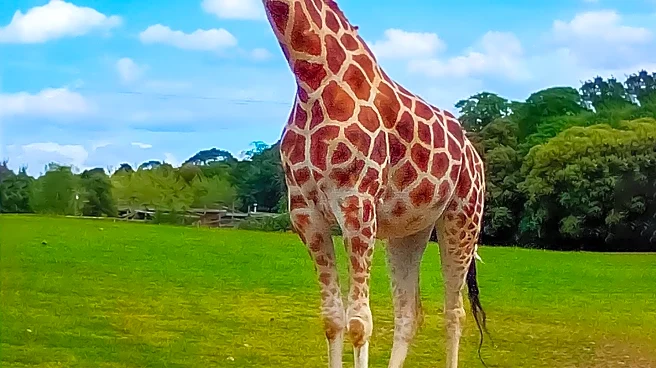What's Happening?
A recent High Court case in the UK has highlighted the growing importance of animal welfare in planning decisions. The case, Animal Equality UK v North East Lincolnshire Council & ASL New Clee Limited,
involved the approval of an onshore salmon farm. Although the claim against the farm was dismissed, the judgment reaffirmed that animal welfare can be a material planning consideration. This means that councils can legally consider the welfare of animals when deciding on planning applications. The case underscores a shift in planning culture, where animal welfare is increasingly seen as integral to decision-making processes.
Why It's Important?
The recognition of animal welfare as a material consideration in planning decisions marks a significant shift in how planning authorities approach development projects. This change aligns with the UK's Animal Welfare (Sentience) Act 2022, which acknowledges animals as sentient beings. The decision could influence future planning applications, particularly those involving farms, zoos, and wildlife facilities. By considering animal welfare, planning committees can better reflect public sentiment and national values, potentially leading to more humane and sustainable development practices. This shift could also impact industries reliant on animal use, as they may face stricter scrutiny in planning processes.
What's Next?
The High Court's decision does not mandate the consideration of animal welfare in all planning decisions, but it opens the door for such considerations to play a role in future cases. Planning committees may now face increased pressure from campaigners and the public to include animal welfare in their deliberations. This could lead to more legal challenges and a reevaluation of existing planning permissions where animal welfare was previously overlooked. As public concern for animal welfare grows, planning authorities may need to adapt their processes to incorporate these considerations more consistently.
Beyond the Headlines
The integration of animal welfare into planning decisions reflects broader societal shifts towards recognizing animals as more than just economic units. This change could lead to a reevaluation of how animals are treated in various sectors, potentially influencing legislation and public policy. As animal welfare becomes more embedded in planning culture, it may also prompt ethical discussions about the role of animals in human society and the responsibilities of planners to consider the well-being of all living beings in their decisions.











